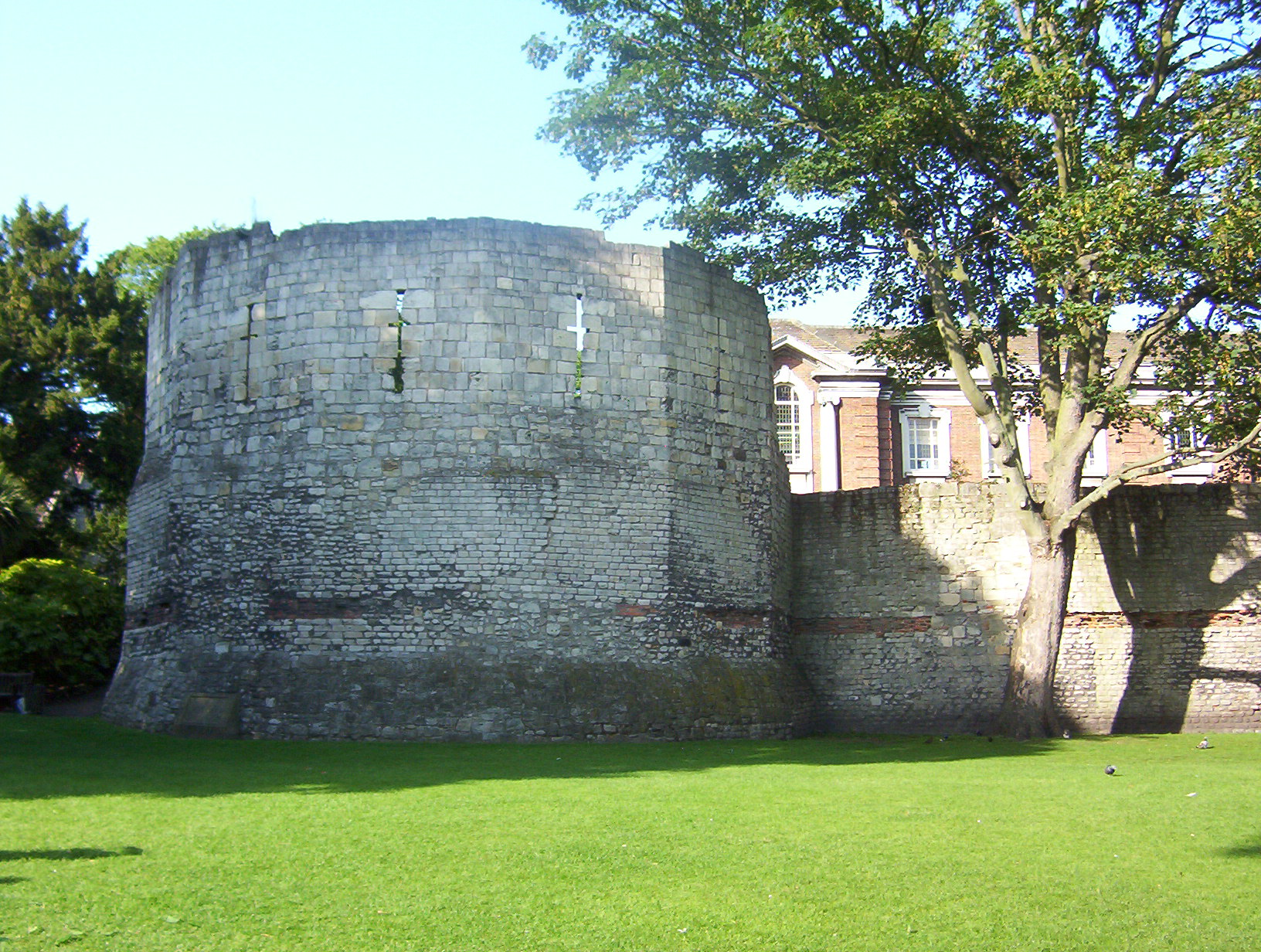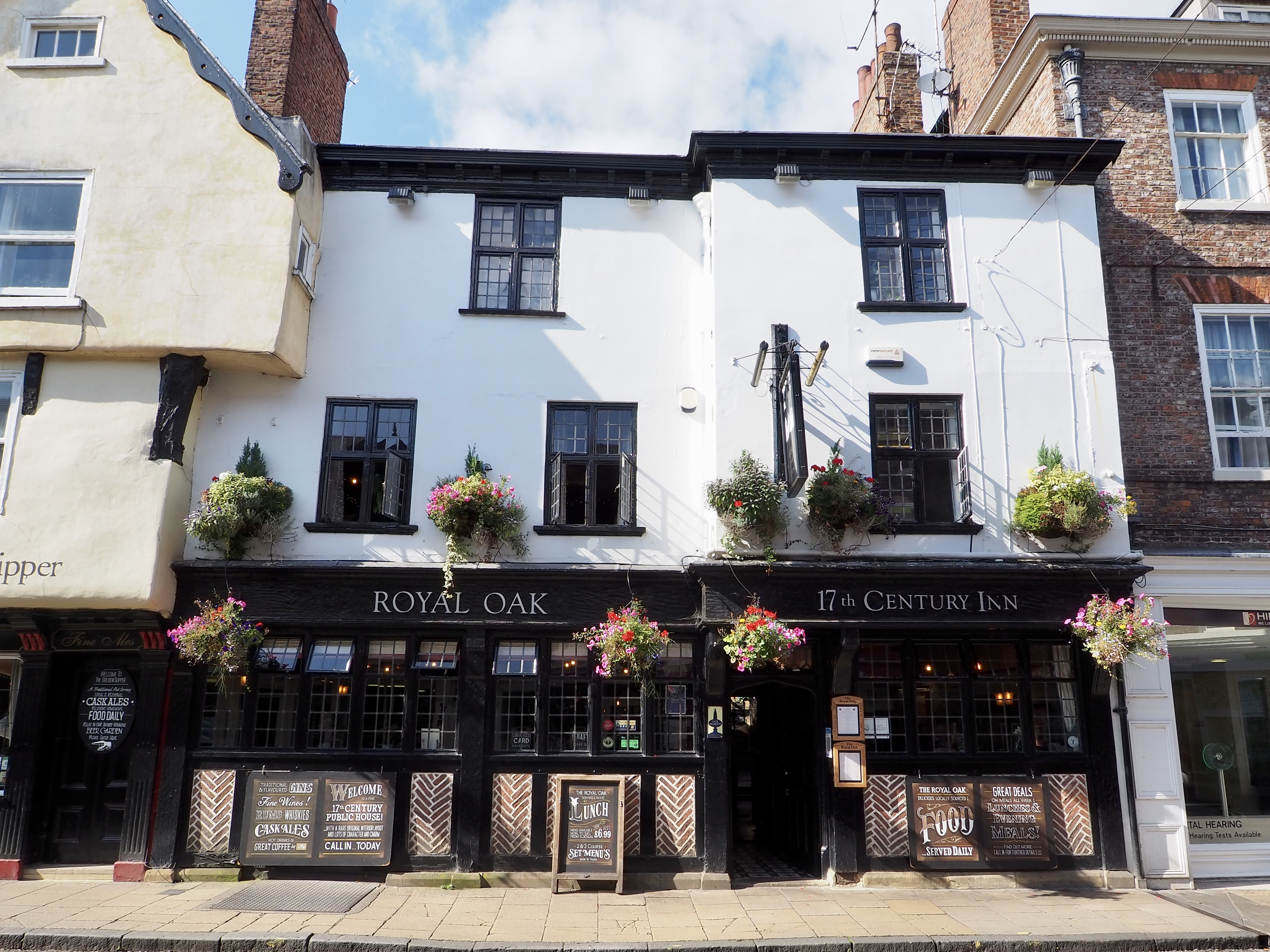|
The Golden Slipper, York
The Golden Slipper is a Grade II listed pub in the city centre of York, England. The pub lies on Goodramgate. It was originally constructed about 1500 as a house, with the north-eastern half the building dating from this period. This section is three storeys high and timber-framed. Its facade is jettied to the street, and rendered over. To its right, it originally overhung an alleyway, but the neighbouring The Royal Oak, York, Royal Oak has since extended into this space. In the 18th-century, it was extended to the rear, in brick, with an attic added to this section in the 19th-century. The south-western half of the building dates from the 19th-century. It is brick-built and of two storeys, with a basement and attic. Internally, the building has been frequently altered and does not retain any original features. Its ground floor, based around a corridor, is largely Victorian, but was partly redesigned in 1983, against the objections of the Campaign for Real Ale. The olde ... [...More Info...] [...Related Items...] OR: [Wikipedia] [Google] [Baidu] |
Golden Slipper York 01
Golden means made of, or relating to gold. Golden may also refer to: Places United Kingdom *Golden, in the parish of Probus, Cornwall *Golden Cap, Dorset *Golden Square, Soho, London *Golden Valley, a valley on the River Frome, Stroud#Golden Valley, River Frome in Gloucestershire *Golden Valley, Herefordshire United States *Golden, Colorado, a town West of Denver, county seat of Jefferson County *Golden, Idaho, an unincorporated community *Golden, Illinois, a village *Golden Township, Michigan *Golden, Mississippi, a village *Golden City, Missouri, a city *Golden, Missouri, an unincorporated community *Golden, Nebraska, ghost town in Burt County *Golden Township, Holt County, Nebraska *Golden, New Mexico, a sparsely populated ghost town *Golden, Oregon, an abandoned mining town *Golden, Texas, an unincorporated community *Golden, Utah, a ghost town *Golden, Marshall County, West Virginia, an unincorporated community Elsewhere *Golden, County Tipperary, Ireland, a village on the ... [...More Info...] [...Related Items...] OR: [Wikipedia] [Google] [Baidu] |
Grade II Listed
In the United Kingdom, a listed building or listed structure is one that has been placed on one of the four statutory lists maintained by Historic England in England, Historic Environment Scotland in Scotland, in Wales, and the Northern Ireland Environment Agency in Northern Ireland. The term has also been used in the Republic of Ireland, where buildings are protected under the Planning and Development Act 2000. The statutory term in Ireland is "protected structure". A listed building may not be demolished, extended, or altered without special permission from the local planning authority, which typically consults the relevant central government agency, particularly for significant alterations to the more notable listed buildings. In England and Wales, a national amenity society must be notified of any work to a listed building which involves any element of demolition. Exemption from secular listed building control is provided for some buildings in current use for worship ... [...More Info...] [...Related Items...] OR: [Wikipedia] [Google] [Baidu] |
York
York is a cathedral city with Roman Britain, Roman origins, sited at the confluence of the rivers River Ouse, Yorkshire, Ouse and River Foss, Foss in North Yorkshire, England. It is the historic county town of Yorkshire. The city has many historic buildings and other structures, such as a York Minster, minster, York Castle, castle, and York city walls, city walls. It is the largest settlement and the administrative centre of the wider City of York district. The city was founded under the name of Eboracum in 71 AD. It then became the capital of the Roman province of Britannia Inferior, and later of the kingdoms of Deira, Northumbria, and Jórvík, Scandinavian York. In the Middle Ages, it became the Province of York, northern England ecclesiastical province's centre, and grew as a wool-trading centre. In the 19th century, it became a major railway network hub and confectionery manufacturing centre. During the Second World War, part of the Baedeker Blitz bombed the city; it ... [...More Info...] [...Related Items...] OR: [Wikipedia] [Google] [Baidu] |
Goodramgate
Goodramgate is a street in the city centre of York, in England. History The area now covered by Goodramgate lay within the walls of Roman Eboracum. The street runs diagonally across the line of former Roman buildings, from the Porta Decumana (now King's Square) to the Porta Principalis Sinistra (now Monk Bar). Anglo-Saxon artifacts have been found in the area, while its name dates from the Viking Jorvik era, being named after someone called "Guthrum" or "Gutherun". The street was first recorded in about 1180. In the Mediaeval period, the street lay in the parish of Holy Trinity Church, although since 1316 the church has been hidden from the street, behind Lady Row. The precinct of York Minster lay immediately north of the street, and until the early 19th-century, was entered through a gateway. Part of this may survive in the rebuilt structure at the entrance to College Street. The original site of the York Dominican Friary may have been on the street, although it moved ... [...More Info...] [...Related Items...] OR: [Wikipedia] [Google] [Baidu] |
The Royal Oak, York
The Royal Oak is a pub in the city centre of York, in England. The pub lies on Goodramgate. The building is believed to date from the 15th-century and is largely timber-framed, although much of it has been rebuilt. The north-eastern section is of three storeys and contains one original internal wall, while the south-western section was originally a single-storey hall and contains part of one original partition wall, plus a reset Mediaeval beam. In the 18th-century, the north-eastern section was extended to the rear, in brick. Many of the features of the upper floors date from this period, including the staircase. A second storey was added to the south-western section in the 19th-century, while in 1934 the ground floor was refurbished, with a new frontage, in the Brewer's Tudor style. The building was a pub by 1772, when it was known as the Blue Pigg. It later became known as the Blue Boar, and has been the Royal Oak since 1819. From 1894, it was owned by the local John J. ... [...More Info...] [...Related Items...] OR: [Wikipedia] [Google] [Baidu] |
Campaign For Real Ale
The Campaign for Real Ale (CAMRA) is an independent voluntary consumer organisation headquartered in St Albans, England, which promotes real ale, cider and perry and traditional British pubs and clubs. With just under 155,000 members, it is the largest single-issue consumer group in the UK, and is a founding member of the European Beer Consumers Union (EBCU). History The organisation was founded on 16 March 1971 in Kruger's Bar, Dunquin, Kerry, Ireland, by Michael Hardman, Graham Lees, Jim Makin, and Bill Mellor, who were opposed to the growing mass production of beer and the homogenisation of the British brewing industry. The original name was the Campaign for the Revitalisation of Ale. Following the formation of the Campaign, the first annual general meeting took place in 1972, at the Rose Inn in Coton Road, Nuneaton. Early membership consisted of the four founders and their friends. Interest in CAMRA and its objectives spread rapidly, with 5,000 members signed up by ... [...More Info...] [...Related Items...] OR: [Wikipedia] [Google] [Baidu] |
Buildings And Structures Completed In The 1400s
A building, or edifice, is an enclosed structure with a roof and walls standing more or less permanently in one place, such as a house or factory (although there's also portable buildings). Buildings come in a variety of sizes, shapes, and functions, and have been adapted throughout history for a wide number of factors, from building materials available, to weather conditions, land prices, ground conditions, specific uses, prestige, and aesthetic reasons. To better understand the term ''building'' compare the list of nonbuilding structures. Buildings serve several societal needs – primarily as shelter from weather, security, living space, privacy, to store belongings, and to comfortably live and work. A building as a shelter represents a physical division of the human habitat (a place of comfort and safety) and the ''outside'' (a place that at times may be harsh and harmful). Ever since the first cave paintings, buildings have also become objects or canvasses of much artisti ... [...More Info...] [...Related Items...] OR: [Wikipedia] [Google] [Baidu] |




